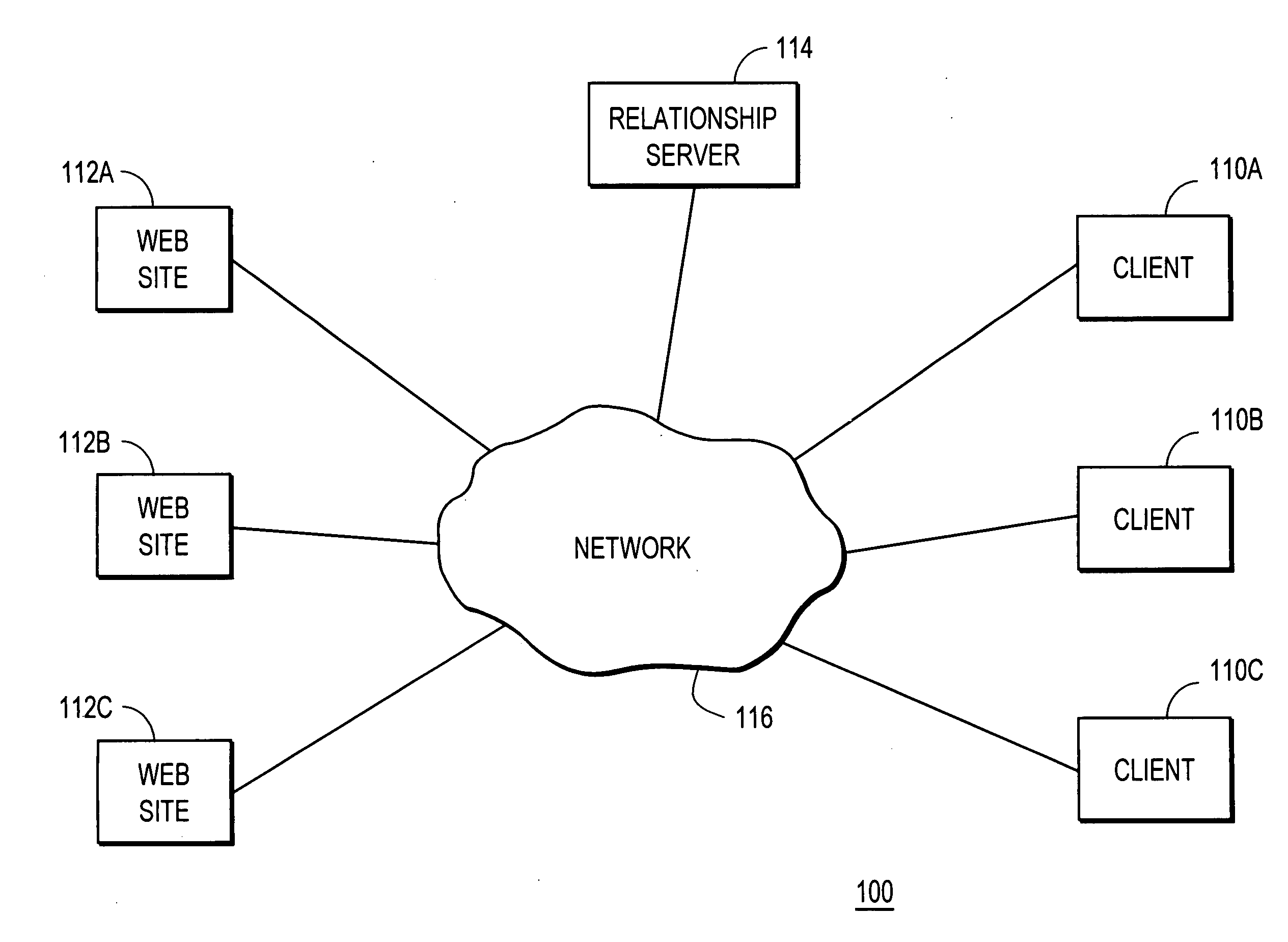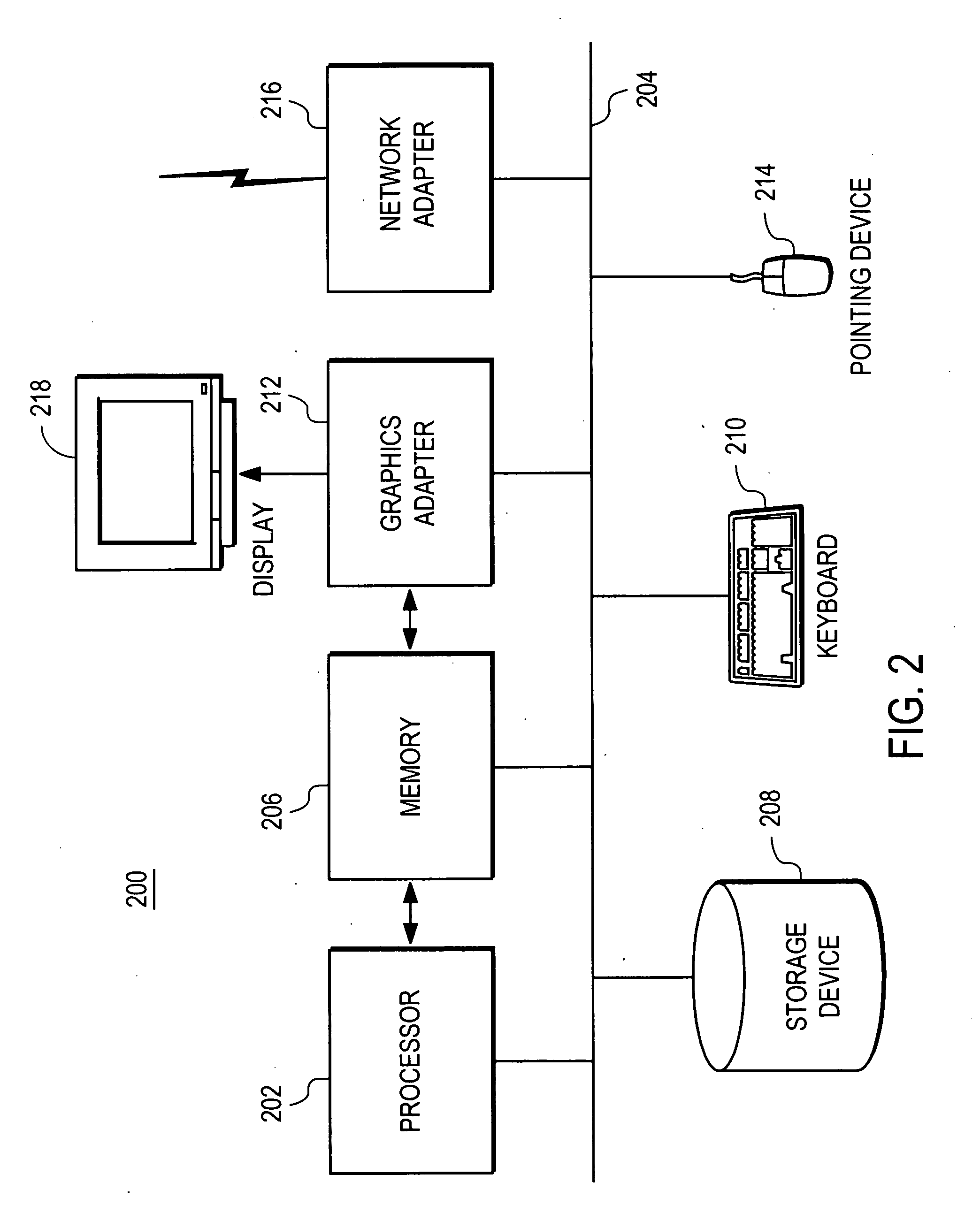Using cross-site relationships to generate recommendations
a cross-site relationship and recommendation technology, applied in the field of determining recommendations through collaborative filtering, can solve the problems of no convenient way for a site to track a person's activity, low recommendation quality, and people browsing the site to stay on the site for a long tim
- Summary
- Abstract
- Description
- Claims
- Application Information
AI Technical Summary
Problems solved by technology
Method used
Image
Examples
Embodiment Construction
[0021]FIG. 1 is a high-level block diagram of a computing environment 100 according to one embodiment of the present invention. FIG. 1 illustrates three client computers 110A, 110B, 110C, three web sites 112A, 112B, 112C, and a relationship server 114 connected by a network 116. At the highest level, end-users of the clients 110 interact with the web sites 112 to establish relationships. The web sites 112 and / or the clients 110 themselves describe these relationships to the relationship server 114. The relationship server 114 uses collaborative filtering and / or other techniques to process the relationships and generate recommendations. The web sites 112 and / or clients 110 present these recommendations to the end-users.
[0022]FIG. 1 and the other figures use like reference numerals to identify like elements. A letter after a reference numeral, such as “110A,” indicates that the text refers specifically to the element having that particular reference numeral. A reference numeral in th...
PUM
 Login to View More
Login to View More Abstract
Description
Claims
Application Information
 Login to View More
Login to View More - R&D
- Intellectual Property
- Life Sciences
- Materials
- Tech Scout
- Unparalleled Data Quality
- Higher Quality Content
- 60% Fewer Hallucinations
Browse by: Latest US Patents, China's latest patents, Technical Efficacy Thesaurus, Application Domain, Technology Topic, Popular Technical Reports.
© 2025 PatSnap. All rights reserved.Legal|Privacy policy|Modern Slavery Act Transparency Statement|Sitemap|About US| Contact US: help@patsnap.com



